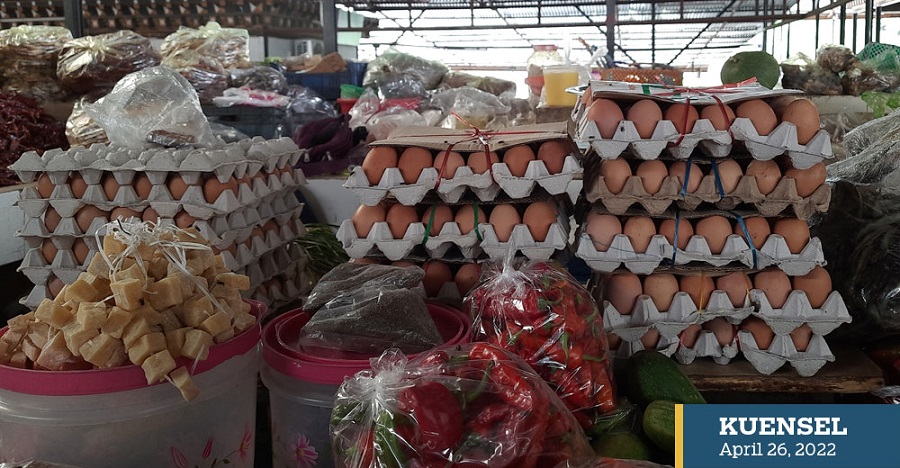
Farmers in Sarpang have started selling poultry birds as increased cost of production and lack of stable market for local eggs worsen poultry business.
A poultry farmer from Shompangkha, Nima Lama, said he sold more than 500 poultry birds. Other farmers have stopped poultry farming in the gewog.
According to Nima Lama, selling birds was a better choice than getting into debt. “The cost of production per egg is Nu 10.5. The farm gate price today is Nu 7.8. We have to bear Nu 2 loss per egg, approximately.”
He said the cost per egg is Nu 10.5 for farmers using Samrat feeds. “At the current farm gate price, farmers have to bear almost Nu 500 losses per carton.”
Nima Lama said farmers were accused of hoarding for the current increase in the supply of eggs. “There were no records of hoarding. The import of eggs coincided with poultry farms picking up the production. The poultry farms were affected by feeds and when the production increased, the market was filled with eggs.”
According to the record Department of Livestock (DoL) maintained, 2,000 cartons of eggs were imported in February and another 1,000 cartons in March.
The import was allowed only to Bhutan Livestock Development Corporation (BLDC) for the egg deficient dzongkhags to ensure there was no rampant supply of eggs in the market.
DoL’s media focal person, Towchu Rabgay, said the cost of production for the government hatchery farmers is Nu 8.6 per egg. “This is relatively higher than the rate in private farms. In government farms, we include staff payment and have many field staff. Farmers’ cost would be lower.”
He said that the feeds price would be the main cause of cost escalation. “The cost of production differs from dzongkhag to dzongkhag. But, it will not exceed more than Nu 8.6 at private farms.”
The department also provides day-old chicks at a subsidised rate. “Farmers won’t incur a loss for now. We are also encouraging private firms to start feed mills. This will set competition within the feed industry and the price would go down,” Towchu Rabgay said.
He said farmers in Sarpang had market areas such as quarantine centres during the lockdown. “The market is expected to improve with the start of the school feeding programme.”
However, Nima Lama said that the import of 3,000 cartons was the surplus by two weeks.
The market is expected to return to normal only after three months.
“We would run in loss if we don’t sell the birds. Farmers have to pay Nu 500,000 until birds start laying eggs in the sixth month for 1,000 birds,” Nima Lama said.
Farmers said feeds price need proper regulation. The feeds prices have never decreased since 2016. At Nu 2,500 per 50kgs, feeds price is at the highest today.
Officials from the National Poultry Research and Development Centre (NPRDC) in Sarpang said the farm gate price should be at least Nu 2,000 per carton.
“If farmers sell below 2,000 they would incur losses. Farmers are selling eggs at Nu 1,600 and Nu 1,700 per carton in desperation. That is too bad,” an official said.
NPRDC’s programme director, SB Chamling Rai (PhD), said the cost per egg in September, months before a disease outbreak in Sarpang, was Nu 8.5. “The cost of production fluctuates daily. Farmers were trained to calculate their own cost of production.”
He said that the cost of production would increase further if the farmers buy day-old chicks from private farms.
The centre is also studying the current market situation facing the farmers in the dzongkhag.
Sources said the cost of almost all commodities has increased in recent months. “The cost of production would also increase. Farmers expect the egg price to go up but it’s the other way round. The egg price is coming down,” an official said.
Officials from the dzongkhag livestock sector said there was no supply of imported eggs in Sarpang. “The eggs were imported for the egg deficient dzongkhags,” an official said.



